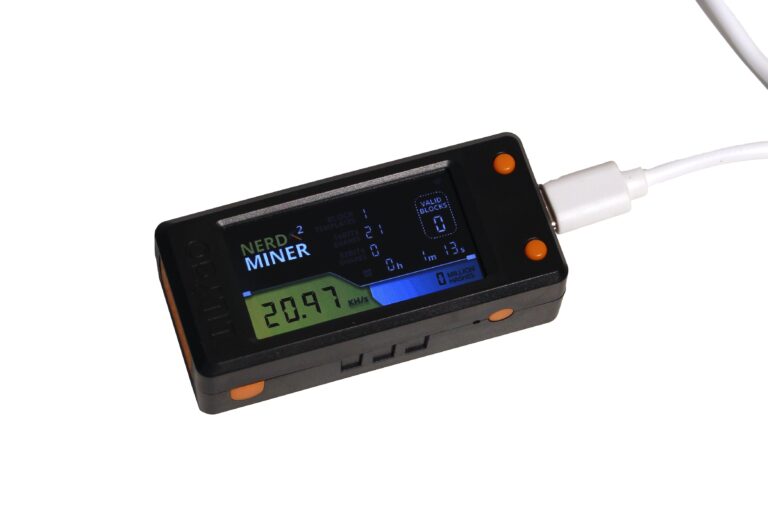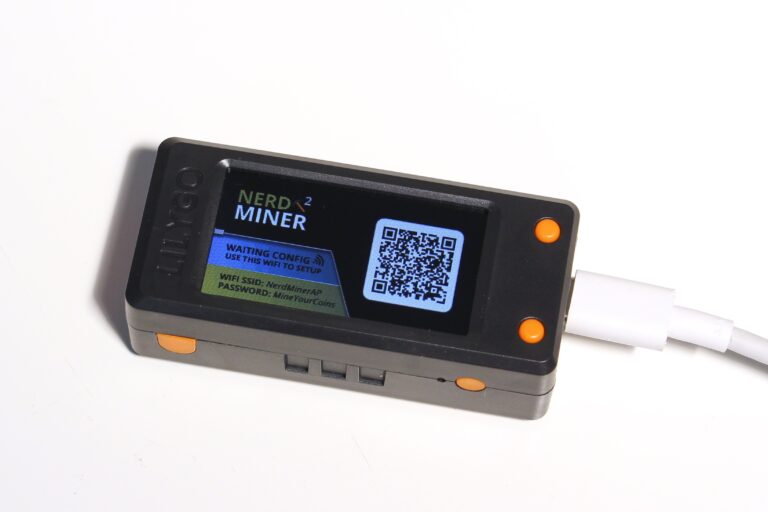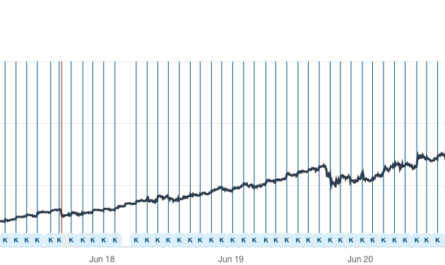In June, we published a comprehensive article with detailed instructions on NerdMiner v2, a small DIY computer that has a very low chance of finding a block during Bitcoin mining by means of solo mining and thus earning a reward of 6.25 BTC. This is expected to apply until April, when the next halving is due and the block reward will then be halved to 3.125 BTC.
Nevertheless, with acquisition costs of just around 30 euros* and annual electricity costs of around 5 euros, the whole thing remains much more attractive than constantly filling out a lottery ticket – especially as the price of Bitcoin has climbed to over 45,000 US dollars at times in recent weeks. With a bit of luck, you could therefore receive more than 280,000 US dollars.
Easier installation, more speed
The makers behind NerdMiner v2 have released some exciting updates in recent weeks. Version 1.6.3 of NerdMiner v2 is now available, which is not only much easier to install and faster to update in future, but has also significantly improved the mining speed. While the small miner achieved a hashrate of around 22 KH/s in June, it can now achieve well over 77 KH/s, which is more than three times faster. This was made possible thanks to the resourceful BitMaker community, which was able to activate the second thread of the small tinker computer for this purpose and uncovered a number of performance improvements.
Above all, the flashing process has been significantly simplified. Whereas in June you still had to laboriously edit and flash four bin files using the ESP tool, this can now be done fully automatically with just one click directly via the browser using Bitmain’s DoItYorSelf-Flasher. This establishes the connection to the developer board via the USB-C cable and installs the latest firmware. Even the stored Bitcoin address and WiFi network do not need to be entered again – the device remembers the previous installation. This means that the NerdMiner v2 can be updated to the latest version within a few minutes and significantly accelerated.
The new public pool can also be used to track functionality via the Internet and monitor its computing speed over time. The developer organizes regular competitions in which, for example, the miner who has achieved the highest difficulty in a predetermined period receives a few Satoshis on their wallet.
- 【T-Display S3】Flash: 16 MB, PSRAM: 8 MB
- 【Besonderheiten】Produkt verschweißt mit schwarzem Gehäuse
- 【Weitere Informationen】github.com/Xinyuan-LilyGO/T-Display-S3
- 【Programmierschritt】Detaillierte Programmierschritte für das T-Display S3 entnehmen Sie bitte dem Video: youtu.be/8uFAKa5bIyg
- 【Aftermarket】Bitte kontaktieren Sie uns, wenn Sie Fragen oder Anregungen haben.
Letzte Aktualisierung am 2024-07-21 at 23:08 / Affiliate Links / Bilder von der Amazon Product Advertising API
Bitaxe: Faster alternative with DIY effort
There is another great development for solo miners: the Bitaxe Ultra. This is based on the ASIC chip BM1366 of the Antminer S19, which is one of the fastest and most efficient miners on the market and has several of them installed, but also involves considerable acquisition costs and huge power consumption. The project does nothing other than recycle such a chip from discarded miners, solder it onto a specially designed circuit board and address it with software.
This has a further advantage: Bitaxe is an open source project that opens up the closed system of the large mining companies, resulting in fewer interdependencies within the Bitcoin network. This also applies to the large mining pools. This is because as more and more users mine, the computing power is divided among several individuals, thus constantly securing the network.
The initiator behind the Bitaxe project “skot” has made complete instructions with all the necessary components and files available on Github. A BM1366 ASIC chip costs around 30 US dollars, with the remaining components costing around the same again. However, there are also ready-made kits available for around 95 US dollars, including complete setups with housing and power supply unit, which then only need to be configured for the home network. As the products are delivered from Canada, additional import duty is incurred.
The Bitaxe Ultra then achieves a hash rate of approx. 527 GH/s and is therefore around ten million times faster than the NerdMiner V2, but with 20 J/TH and a power consumption of just under 11 W, it is extremely efficient. The Bitcoin network has been given considerably more computing power, while power consumption is still very manageable. Nevertheless, you will still need a little bit of luck. This is because, with a term of ten years and a doubling of the hash rate in the entire Bitcoin network every two years, the chance of finding a block is just around 1:600,000,000.
The probability is therefore still low, but participation in Bitcoin mining continues to be promoted and is becoming increasingly affordable.
- Der Bitcoin-Standard: Die dezentrale Alternative zum Zentralbankensystem
- White
- ABIS_BOOK
- Ammous, Saifedean (Author)
Letzte Aktualisierung am 2024-07-27 at 05:20 / Affiliate Links / Bilder von der Amazon Product Advertising API








